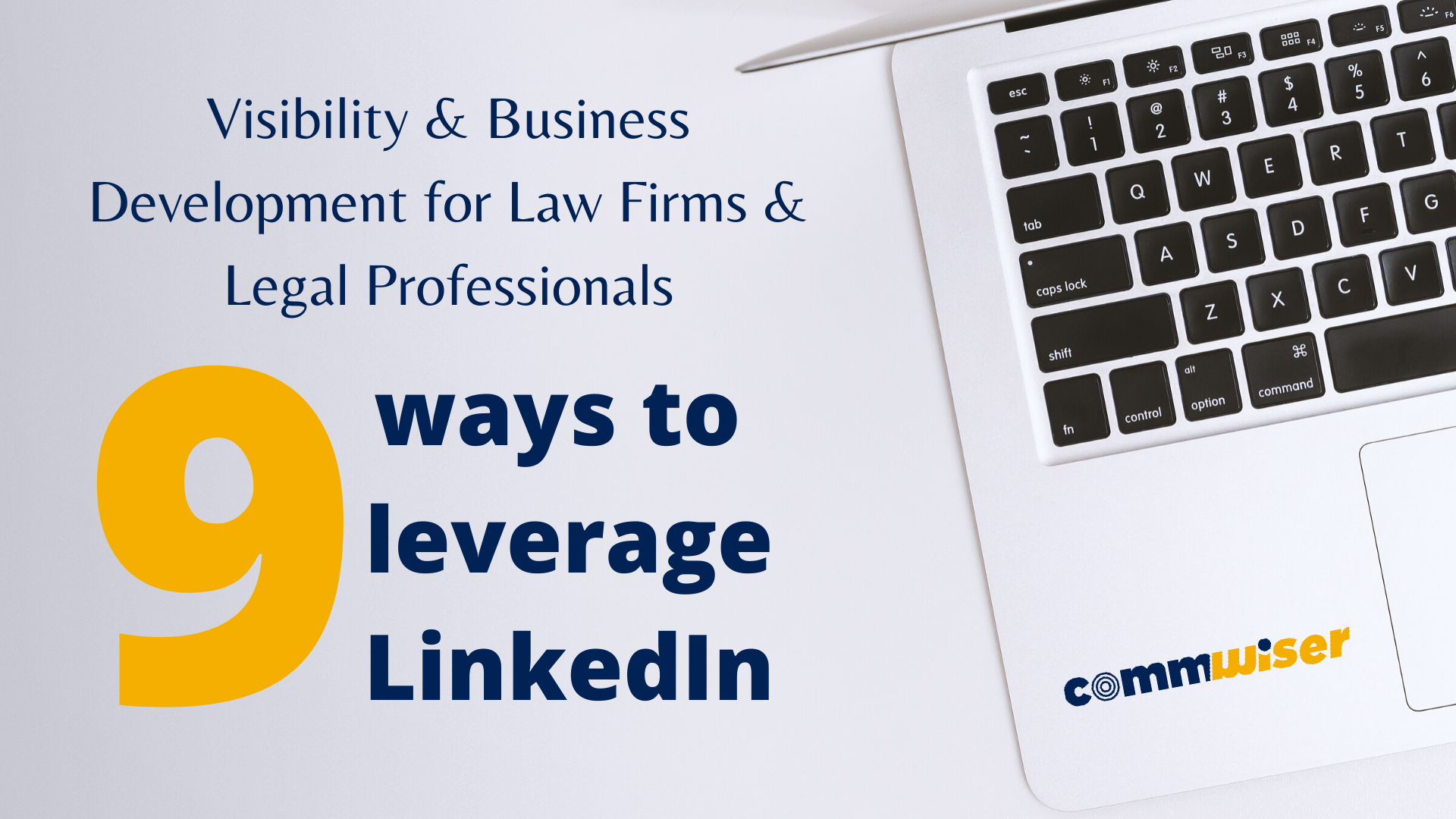Nine Ways to Leverage LinkedIn
1. Build relationships with potential clients. If you deal with corporate business, small business, or real estate issues, you can use LinkedIn to network with potential clients—and educate them so they will want to come to you with their problems.
2. Identify and connect with potential referral sources. A lawyer who specializes in banking laws can network with lawyers at Debt Recovery Tribunals. Business lawyers can network with general counsels, accountants, and business advisors. Lawyers who work in the real estate industry can connect with realtors who can refer business to them and so on.
3. Create a community of like-minded professionals. A real estate attorney can share information with a group of real estate agents who may refer business when their clients need advice. Within this group, you can develop conversations and link prospects, referral sources, and the media back to your blog or website where they can get even more information. Your LinkedIn group is part of the lead generation funnel.
4. Build relationships with the media. More media professionals are on LinkedIn—92 percent— than on any other social networking site. That means editors, journalists and reporters of local, regional, and national publications and other media types are available to you on LinkedIn. Reach out and invite them to your group so they can see the type of information you offer their readers, listeners, or viewers.
5. Spread your content and prove you’re a thought leader. Placing your content—and expertise—in front of targeted prospects is the absolute best way to attract new clients and referral sources. That’s why you need to join the groups your prospects are going to for information. That is where you can provide and engage in conversations.
6. Nurture relationships with existing clients. Your marketing and relationship-building efforts should not stop once someone becomes a client. Consider creating a LinkedIn group specifically to provide exclusive content and information just for clients. This can help you with client retention.
7. Conduct market research then promote it (and yourself) via articles and press releases. Recently, a client who is a workplace communication expert used LinkedIn to conduct a study of CEOs, presidents, vice presidents, and managers. From his research, he found that 44 percent of the executives surveyed were unhappy with their employees’ performance and their own communication style. Through survey questions, he was also able to uncover the specific problems they were encountering. With this knowledge, he then created: ` A report that showcased the results ` A Press release to reveal the results and position him as a thought leader ` Webinars to discuss solutions to the problems his audience were encountering ` Articles and LinkedIn discussions to promote the study, the report and the event ` A complete marketing and public relations plan based on the study
8. Stay in touch with what’s happening in your specialty. Join groups that your peers, colleagues, and competitors belong to. It will help you stay current on trends, problems, concerns, and even specific cases. You will be able to see what others are talking about and what they have to share. And you can use this as an idea bank for articles and press releases you can write to promote your own firm.
9. Showcase the abilities of every lawyer in your firm. Every attorney in your practice should have a LinkedIn profile, and there should be a link to each LinkedIn profile on the individual lawyer bio pages on your firm website. This enables clients or prospects to reach out to your practice in another way and on a more personal level. It is often easier—and less expensive—to keep your LinkedIn profile updated than it is to update your own website biography.




 Content is king
Content is king Big disruptor
Big disruptor